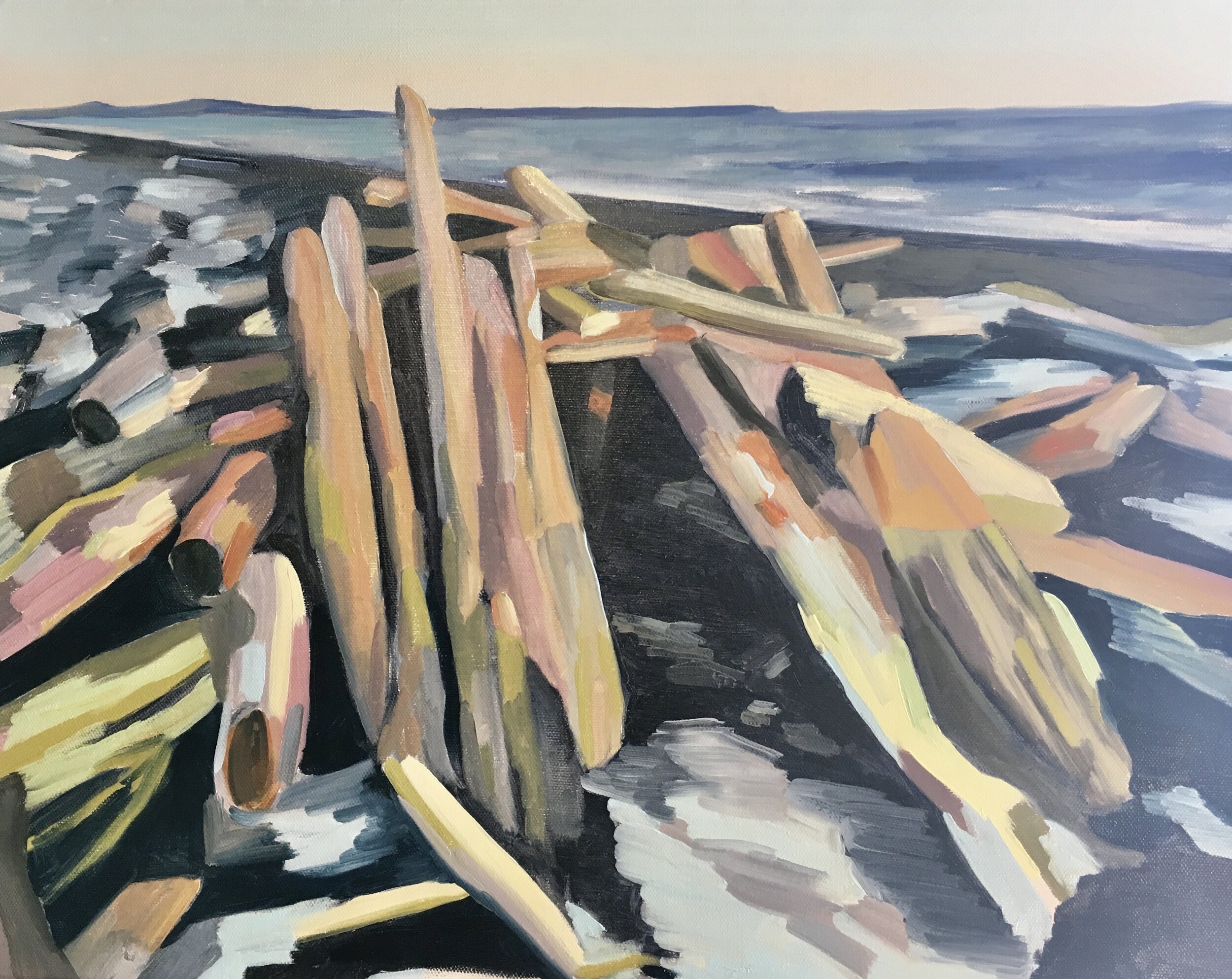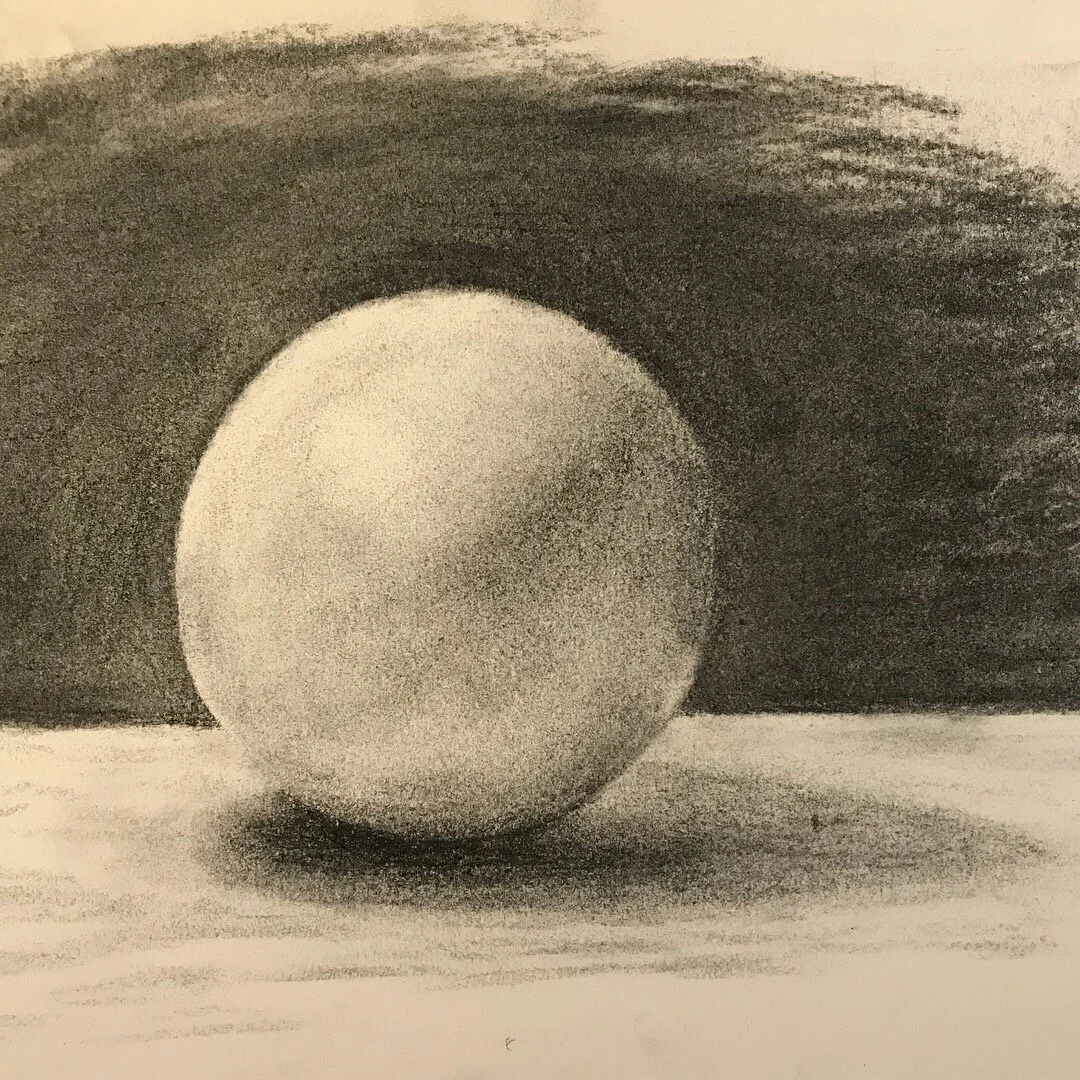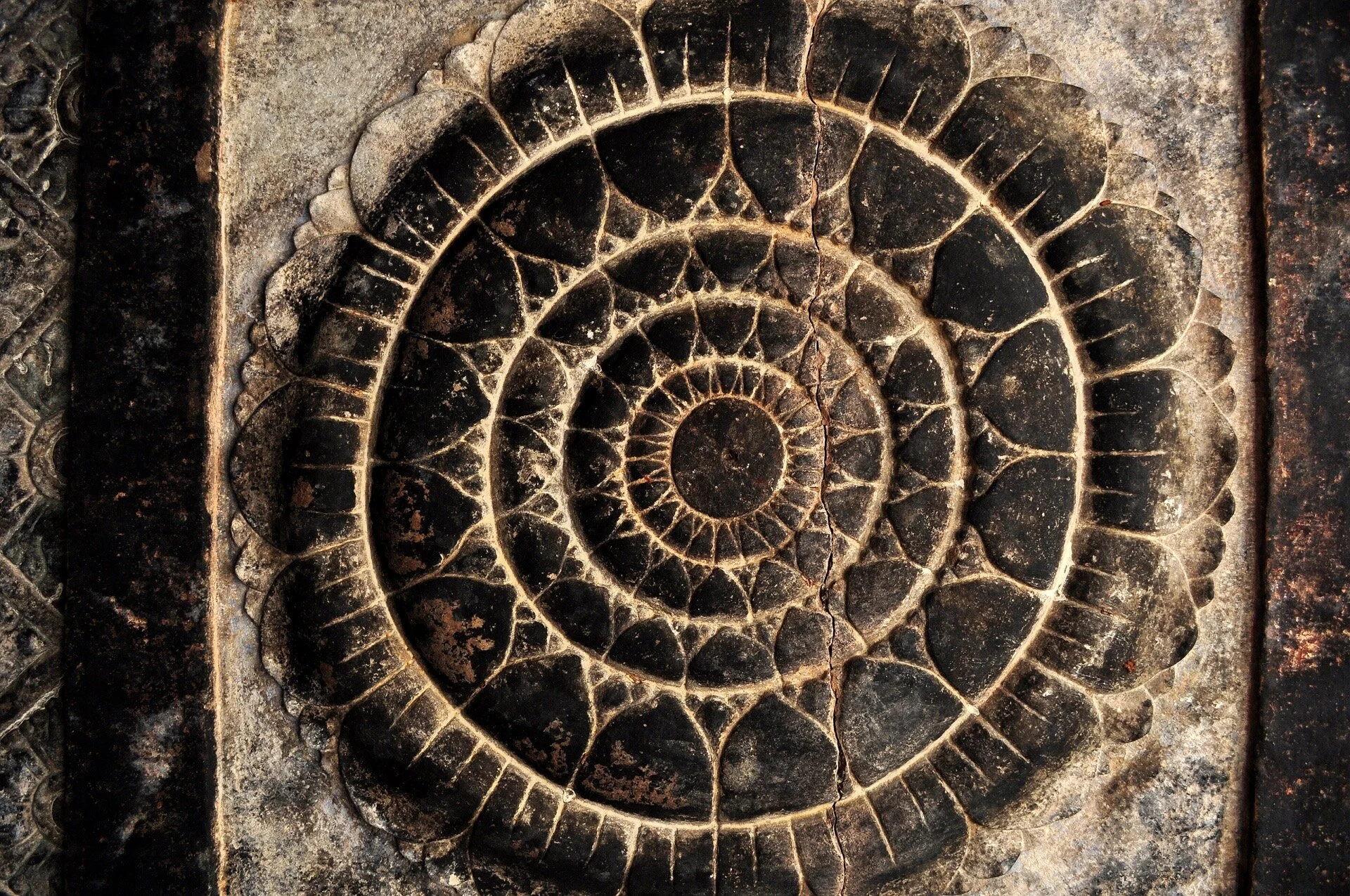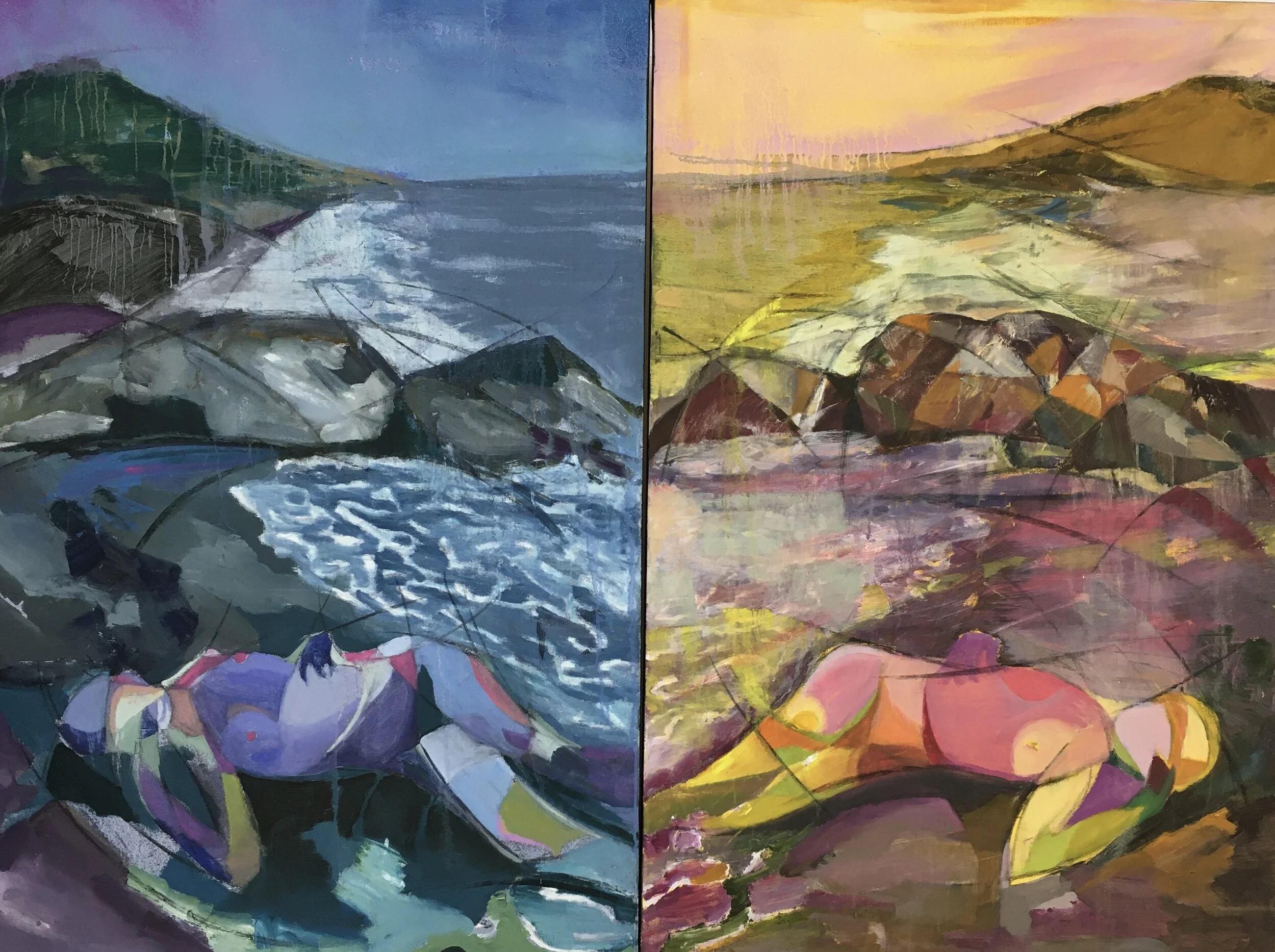How Art Heals
5 Ways Art Makes Everything Better
Art is a wound turned into light.
—George Braque
In every age, art does a heckuva lot of work.
On a recent trip to the Portland Art Museum, I came around the corner to be faced with a large piece by one of my favorite artists, James Lavadour. I was speechless. I spend 20 minutes looking at it from far, and close up, and closer. I was transformed into a better version of me - one who can be calm and look, can live inside a moment and find peace. It was powerful.
Tilchum, oil on panels, 102x152, James Lavadour, PDX Contemporary Art
I realized I was engaging in one of art’s biggest missions - healing.
As I walked through the museum, I started to think of some of the other things art does for us.
From teaching us how to see in linear perspective, to letting everybody know who is in power, the jobs of Art (with a capital A) are many and diverse, both good and bad.
Here are a few jobs Art does:
Teaching History - Revising History
Instilling beliefs, dogma or propaganda
Glorifying those in power, and instilling fear and awe
Remembering the dead
Seeing the unseen, the poor, the forgotten
Offering distraction from difficult times - Bringing joy and fun
Expressing the emotions of the artist
Capturing a lifestyle or place in time
Envisioning the future
Creating a new language of color, form and line
Championing and explaining a political point of view or societal shift
Whew! (I could go on, and give examples for each one, but that’s a different blog post.)
But now, as much as ever, art is recording the anxiety of our times - from Black Lives Matter being painted on the street in front of Trump Tower, to a banana being taped on the wall with duct tape to express the absurdity of it all.
Still, I feel that one important role art is playing in these challenging times - with a pandemic, an anxiety-filled election, unemployment, economic uncertainty, international turmoil (need I remind you?) - is the role of Healer.
Art Heals
We ask art to do a lot of things - but heal? Even if we LOVE looking at paintings, sculpture, prints, photographs, installations, films. How could they actually do anything real to our minds and bodies?
But a lot of scientist, doctors, therapists (and artists), think it’s true.
Here are just a few of the many ways art heals:
Art Lowers Anxiety
Art Generates New Solutions
Art (Both Making It and Looking at It) Can Be Actual Therapy
Art Helps Us Deal With Difficult Realities
Art Builds Safe, Meditative Spaces
1. Art Lowers Anxiety
Firstly, just looking at art can be healing.
For centuries, many cultures have used the mandala form as a tool for contemplation and prayer.
My friend and fellow artist Pamela Hoke paints natural forms and animals, and has written about how nature and art collaborate for our healing:
How do we glide through uncertain times? We can learn from Nature. Here, we can learn from the Heron and sense a deep relationship with this wise bird. We can learn to feel and rely on a tangible life force – some would call it faith, yet perhaps we can indulge in a new open mindedness, that it is a force that we don’t have to fully understand, yet at least grasp comfort in all of life support life.
2. Art Generates New Solutions
Even the simplest art, like a Japanese enso (the round circle above), is layered with complexity, like William Blake’s idea of “the world in a grain of sand.” The more you look, the more ideas reveal themselves, whether the art is simple or complex.
Good art is often complex, layered with multiple elements and meanings. It takes time to find, examine, and consider the numerous details that constitute most works of art. (Walden U)
Art can help us think about complex problems in simple ways, and simple problems in complex ways. Take the installation of chunks of ice in Olafur Eliasson’s installation below. People could actually see these mini-icebergs melt - and be faced with the reality of climate change on their morning walk, bringing new awareness and thinking about the problem. Eliasson takes his ideas further - working with scientists and other groups into forums and workshops, sparking solutions for current problems. He wrote about this for the World Economic Forum in Davos:
Being able to take part in these local and global exchanges has profoundly affected the artworks that I make, driving me to create art that I hope touches people everywhere.
3. Art (Both Making It and Looking at It) Can Be Actual Therapy
Psychologist Cathy Malchiodi in her book The Art Therapy Sourcebook, writes that art therapy is “a modality for self-understanding, emotional change and personal growth.”
I believe that my role as an art therapist is to help people explore and express themselves authentically through art. Through this process, people may find relief from overwhelming emotions, crises or trauma. They may discover insights about themselves, increase their sense of well-being, enrich their daily lives through creative expression, or experience personal transformation.
Yes, focused attention on therapeutic benefits are obvious. But what about most of us who don’t ever go to an actual art therapist - can art help us?
Many artists will tell you that making art is therapeutic and calming - it helps you calm distracting, negative and unhelpful thoughts, it gets your hands and body working as opposed to only your mind. Color brings joy or calm, and can connect you with your emotions.
Image Courtesy Cathy Malchiodi / Josh Kale 2015
4. Art Helps Us Deal with Difficult Realities
Poetry is consoling in times of unrest and pain, illness and grief. One of the greatest examples I have found comes from the poet, Richard Wright’s book of 800 haiku poems, a selection of the more thank 4,000 he wrote during his last year of illness in Paris.
Here is of my favorites:
Did somebody call?
Looking over my shoulder:
Massive spring mountains.
Wright’s daughter Julia said these poems were: “self-developed antidotes against illness, and that breaking down words into syllables matched the shortness of his breath” and he continued, she said, “to spin these poems of light out of the gathering darkness.”
5. Art Builds Safe, Meditative, Imaginative Spaces
From the point of view of artists, making art can break open and free trauma. For myself, walking, beachcombing and just looking closely at the forms of nature helps lower my anxiety level, calm my mind’s storm. And then, going to a gallery or museum where I can look at how other artists have translated their emotions and observations into healing messages, I am experiencing a pure connection to imagination, the land where everything is ok.
I’m interested only in expressing basic human emotions – tragedy, ecstasy, doom and so on – the people who weep before my pictures are having the same religious experience I had when I painted them, and if you … are moved only by their colour relationships, then you miss the point.
—Mark Rothko
I hope that my art can do that for you as well. My intention is to take my viewer to a sort of island of imagination - it is ok to get stranded there, to sit back and dream, enjoy the weather, the color, the scenery, the energy, have another umbrella drink, pick up a stone, and be in the presence of yourself.













